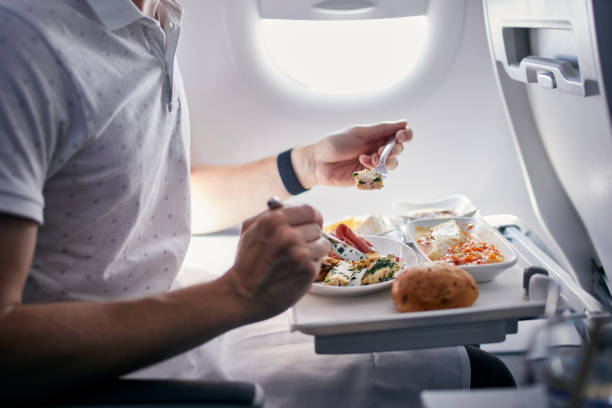Flight Attendant Careers: Private Jet & Airline Guide
Explore the differences between private jet and commercial flight attendant roles, what daily duties look like, and how to build a career in aviation. This guide covers safety training, certifications, job structures, expected schedules, and pay ranges so you can plan your next move with confidence.

Flight Attendant Careers: Private Jet & Airline Guide
What sets private jet service apart
Working on private jets differs markedly from mainstream airline service. Private flight attendants typically care for smaller groups, personalize meals and amenities, and adapt services to the preferences of aircraft owners or charter clients. The role often calls for heightened discretion, a polished hospitality approach, and the ability to handle last-minute itinerary changes—because flights are scheduled around owner or client needs rather than fixed airline timetables. Employers in this space can include charter operators, aircraft management firms, corporate flight departments, and brokers; always confirm hiring status and contact information directly with the operator before proceeding with an application.
Core responsibilities of a flight attendant
Safety is the foundation of any cabin role. Flight attendants are responsible for preflight safety checks, passenger briefings, and managing emergency procedures when needed. Routine tasks include monitoring cabin security, administering basic first aid, and performing demonstrations of safety equipment. In private aviation, attendants frequently take on additional duties such as organizing bespoke catering, coordinating ground logistics with FBOs, and managing in-cabin amenities like entertainment, linens, and specialty beverages. Strong communication skills, situational awareness, and the ability to remain calm under pressure are essential across all operator types.
How the aviation sector is organized
The aviation ecosystem comprises commercial airlines, regional carriers, charter services, corporate flight departments, and fixed-base operators (FBOs). Each segment follows different operational protocols and hiring practices. Large commercial carriers tend to run formal recruitment campaigns, often with unionized contracts and standardized career ladders. By contrast, private jet roles may be filled directly by owners, through management companies, or via recruitment agencies and brokers. Licensing, oversight, and compliance also vary by jurisdiction—research the regulatory body and local rules in your country to understand what applies to the roles you target.
Building a career path in aviation
Start by mapping role requirements to your existing experience. Entry paths commonly include customer service, hospitality, or military aviation backgrounds. Focus on polishing communication, multilingual ability if relevant, and professional presentation. Make sure you meet basic physical and legal prerequisites such as valid identification or passports and clean background checks. Networking with industry professionals, attending aviation job fairs, and keeping a résumé that highlights safety, hospitality, and teamwork will increase your chances. Treat online listings as leads—verify openings on official employer pages or recognized aviation job platforms before investing in training or travel for interviews.
Training, certifications, and valued skills
Most operators require cabin safety and emergency procedure training; many also expect CPR and first aid certification. Commercial airlines typically mandate completion of airline-specific indoctrination courses and recurrent training to maintain compliance with safety protocols. Private jet attendants often benefit from additional hospitality or VIP service training and may pursue aircraft-specific safety courses depending on the jet models they will serve. Employers prize soft skills such as discretion, cultural sensitivity, problem-solving, and high-end service etiquette just as much as technical qualifications.
Compensation, schedules, and realistic expectations
Pay and schedules can vary widely depending on employer type, geography, experience level, and contract terms. Commercial airline positions often follow clear pay scales, benefits packages, and predictable rosters. Private jet work can offer varied compensation structures—per-diem allowances, overnight rates, or bespoke contracts tailored to owner arrangements. Consider reported salary ranges from multiple sources and factor in perks like travel benefits, retirement contributions, and health plans. Read contracts carefully and confirm pay, duty hours, layover expectations, and any additional reimbursements before accepting an offer.
| Role | Typical compensation range | Notes |
|---|---|---|
| Entry-level regional/commercial attendant | $20,000–$35,000 (annual) | Varies by airline and region; benefits differ |
| Major airline flight attendant | $35,000–$70,000+ (annual) | Seniority and union agreements affect pay |
| Private jet attendant | $40,000–$90,000+ (annual or contract-based) | Can include per-diem, overnight pay, and perks |
| Contract/seasonal/charter | Hourly or contract rates | Highly variable; depends on contract length |
Cost disclaimer: Salary figures are estimates and will vary by employer, location, experience, and contract terms. Verify current compensation with the hiring organization.
Final considerations
A flight attendant career can lead to diverse experiences—from structured airline schedules to the bespoke demands of private aviation. Choose the segment that aligns with your lifestyle and strengths, pursue the relevant safety and hospitality certifications, and cultivate professional relationships within the industry. This overview is intended to help you plan and prepare; it does not list current job openings or guarantee employment. For hiring specifics, always consult official employer career pages or accredited aviation job boards.






